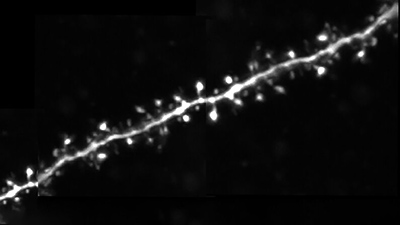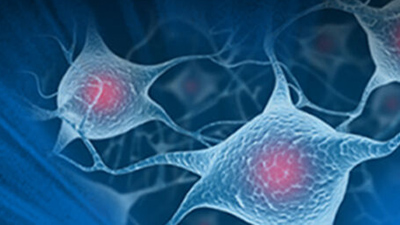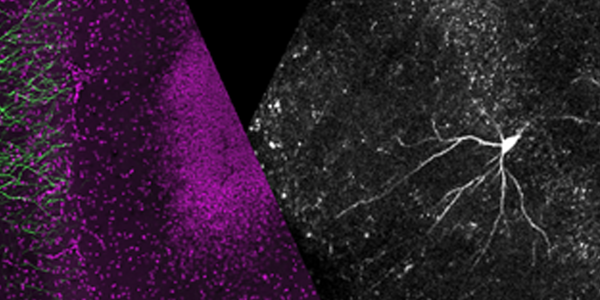Neurotransmitter Uncaging
Understanding how individual neurons integrate the thousands of synaptic inputs they receive is critical to understanding how the brain works (1). It is undisputable today that dendrites with their characteristic non-linear integration of inputs play critical role in information processing in the brain. However, studying complex spatiotemporal patterns of synaptic inputs is still very challenging.
突触integrati的研究方法之一on in dendrites is photolysis of caged glutamate and systematically probing the dendrite’s voltage response to differential spatial and temporal pattern that mimics synaptic input activity (2,3).
Bruker offers several technical developments for this area of research. Both 1-photon and 2-photon neurotransmitter uncaging at multiple spines can be achieved. Uncaging is performed simultaneously with imaging thanks to dual optical light paths (3,4).
Bruker also offers holographic uncaging with random 3D access with its Neuralight 3D spatial light-modulator (SLM) product. It is a liquid crystal device that generates holographic patterns of illumination to form multiple focal points or arbitrary shapes. This device can produce truly simultaneous illumination at multiple locations. To facilitate fast volumetric imaging while performing 3D neurotransmitter uncaging Bruker implemented optically corrected electro-tunable lens (ETL).
Bruker support this application with proprietary Prairie View software. Software allows for defining, synchronizing, and calibrating laser illumination, galvanometer mirror positioning, electrophysiology, and fluorescence measurements integration.
References
- 1. Stuart GJ, Spruston N. Dendritic integration: 60 years of progress. Nat Neurosci. 2015 Dec;18(12):1713-21. doi: 10.1038/nn.4157.
- 2. Durand-de Cuttoli R, Chauhan PS, Pétriz Reyes A, Faure P, Mourot A, Ellis-Davies GCR. Optofluidic control of rodent learning using cloaked caged glutamate. Proc Natl Acad Sci U S A. 2020 Mar 24;117(12):6831-6835. doi: 10.1073/pnas.1920869117.
- 3. Tran-Van-Minh A, Abrahamsson T, Cathala L, DiGregorio DA. Differential Dendritic Integration of Synaptic Potentials and Calcium in Cerebellar Interneurons. Neuron. 2016 Aug 17;91(4):837-850. doi: 10.1016/j.neuron.2016.07.029.
- 4. Tazerart S, Mitchell DE, Miranda-Rottmann S, Araya R. A spike-timing-dependent plasticity rule for dendritic spines. Nat Commun. 2020 Aug 26;11(1):4276. doi: 10.1038/s41467-020-17861-7.
- 5. Harnett MT, Makara JK, Spruston N, Kath WL, Magee JC. Synaptic amplification by dendritic spines enhances input cooperativity. Nature. 2012 Nov 22;491(7425):599-602. doi: 10.1038/nature11554.


